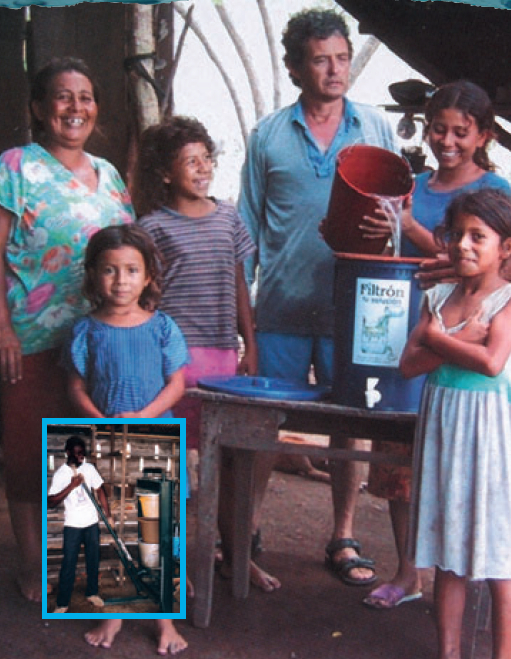Difference between revisions of "Ceramic Silver Pot (CSP) filter"
| (One intermediate revision by the same user not shown) | |||
| Line 1: | Line 1: | ||
| + | {{Language-box|english_link= Ceramic Silver Pot (CSP) filter| french_link= Coming soon | spanish_link= Coming soon | hindi_link= Coming soon | malayalam_link= Coming soon | tamil_link= Coming soon | swahili_link=coming soon | korean_link= Coming soon | chinese_link=陶瓷银浸锅(CSP)过滤器 | indonesian_link= Coming soon | japanese_link= Coming soon }} | ||
| + | |||
[[Image:Ceramic_filter_icon.png|right|80px]] | [[Image:Ceramic_filter_icon.png|right|80px]] | ||
[[Image:CSP filter.jpg|thumb|right|200px|Family using a CSP (Ceramic Silver impregnated Pot model) filter in Zapatera, Nicaragua. Photo: NWP.]] | [[Image:CSP filter.jpg|thumb|right|200px|Family using a CSP (Ceramic Silver impregnated Pot model) filter in Zapatera, Nicaragua. Photo: NWP.]] | ||
| − | + | ||
A new alternative to conventional ceramic candle filters is the CSP filter.This model has a pot-shaped ceramic filtering element that is treated with colloidal silver. It has a bigger capacity and is easier to produce locally than candle filters. Also leakages are easier to detect than in candle filters so there is less risk in use. | A new alternative to conventional ceramic candle filters is the CSP filter.This model has a pot-shaped ceramic filtering element that is treated with colloidal silver. It has a bigger capacity and is easier to produce locally than candle filters. Also leakages are easier to detect than in candle filters so there is less risk in use. | ||
Latest revision as of 06:45, 2 October 2017
| |
|
|
|
|
|
|
|
|
|
A new alternative to conventional ceramic candle filters is the CSP filter.This model has a pot-shaped ceramic filtering element that is treated with colloidal silver. It has a bigger capacity and is easier to produce locally than candle filters. Also leakages are easier to detect than in candle filters so there is less risk in use.
Evaluations, including a USAID-funded test in Nicaragua, indicate that CSP filters remove turbidity and harmful bacteria that cause diarrhoea, cholera and other waterborne diseases.Maintenance consists of cleaning with a brush and changing the ceramic element every 2-3 years. If filled twice a day the filter produces enough for a family of six.
Field studies have shown that investment in a filter is “paid back”within 3 to 6 months because of savings on expenses for medicines, fuel wood and labour. In Nicaragua, Guatemala and Cambodia the production of this filter is a commercial activity and production is starting up in six other countries.
“A filter for family use that provides clean and bacteria-free water at a cost of US$ 3-5 per family per year” - Ron Rivera of the NGO Potters for Peace.
Construction, operations and maintenance
Capacity: 10-20 litres/day.
Costs
Cost complete filter:
(off-factory): US$ 8 in Cambodia, US$ 10-15 in Nicaragua.
Cost of introduction: US$ 15,000 - 30,000 for project incl. training, machinery and a first production of 500 filters. US$ 50,000 - 100,000 for project incl. production shop, training, first promotion, and 5,000 filters.
Field experiences
150,000 in Central America, Asia and Africa.
Acknowledgements
- SmartWater Solutions: Examples of innovative, low-cost technologies for wells, pumps, storage, irrigation and water treatment. or (alternative link). Netherlands Water Partnership, 2006.

